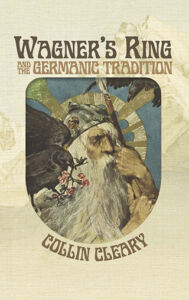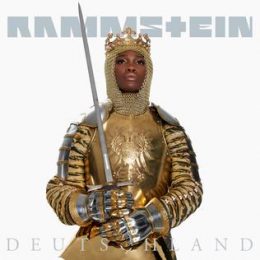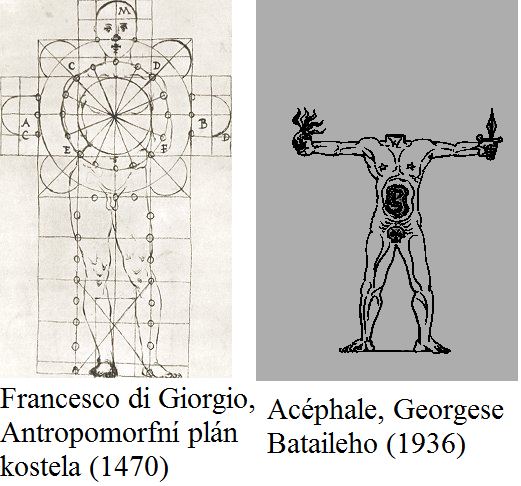Rammstein’s Deutschland
Posted By Ondrej Mann On In North American New Right | Comments DisabledRammstein was formed in 1994 in Berlin by six men who were originally from East Germany. Their name came from the 1988 Ramstein air show disaster. They created a new musical genre called Neue Deutsche Härte (New German Hard Rock), which was basically a combination of hard rock with elements of techno. Although the band has used English, Russian, French, and Spanish in their lyrics, they have mostly promoted the use of German and became typical of this genre. Some people even consider Rammstein’s music to be a kind of crash course in German.
Rammstein was most influenced by the Slovene band Laibach, both musically and in the design of their logo. In fact, both bands’ logos and sometimes even their compositions are incredibly similar. As with Laibach, Rammstein’s lyrics are often intelligent and witty, dealing with unusual but serious topics and using literary references, allusions, and double entendres. They are thus outside the usual American pop-culture banality.
The band has never shied away from “controversial” topics, be it violence, sadomasochism, horror visions, or unusual interpretations. But unlike their rock counterparts Böhse Onkelz, the band has never aligned itself with the Right wing or the skinhead movement. They are just a typical German band.
Metapolitical meaning
On March 28, 2019 Rammstein, along with director Specter Berlin, released a new and controversial music video: Deutschland. A furore was immediately triggered and Emmanuel Nahsho, a spokesman for the Israeli Foreign Ministry, reacted to stills from the video by saying, “This Rammstein clip, using the Holocaust for advertisement purposes, is shameful and uncalled for. We join the many voices calling for its immediate removal.”

Representatives of the German Central Council of Jews such as Josef Schuster, its Chairman, also spoke out against the clip: “If the band Rammstein were to profit from the Holocaust through a new video clip, it would be in bad taste and would make a mockery of the millions of people who suffered unspeakably during the Shoah and were murdered in the most horrible way.” For his part, Felix Klein, the German government’s Anti-Semitism Commissioner, called it “a tasteless exploitation of artistic freedom.”
What’s got them so outraged?
Personally, I don’t think the Jewish communities are that bothered by the use of the Holocaust for other ends because they themselves organize many events, even commercial ones, related to it. They are more bothered by the fact that they don’t have the copyright on the Holocaust and therefore can’t sell it to rich bands and film producers.
 [2]
[2]You can buy Collin Cleary’s Wagner’s Ring & the Germanic Tradition here. [3]
After the Second World War, Germany reached ground zero and its new beginning. Firstly, it was physically completely broken (think of the city of Dresden for example), and secondly, it was divided and occupied into zones (in the west they were eventually merged into one big American zone). In fact, Germany‘s occupation by the US military continues to this day. Since the war, Germany has been occupied politically, economically, strategically, and intellectually.
As part of the denazification process, self-hatred (Selbsthass) and the narrowing of German history to the Holocaust were culturally promoted among Germans. While the Italians can proudly recall the Roman Empire, the Greeks their Greek city-states, the Macedonians Alexander the Great, the whole of German history has been reduced to one big negative sign. That is why it is difficult to talk about it, write about it, and even more difficult to make a comprehensive video about it. In a time of censorship and political persecution, only metaphors and quotations can therefore be used. In doing so, the artist escapes persecution, while elevating his audience and making them think.
Lyrically, the video clip points to its predecessor, Laibach, and their rendition of the anthem “Germania [4]” (from Volk).
Rammstein’s guitarist, Paul Landers, has stated on this topic:
The Germans definitely have a problem. Before, it was Deutschland über alles — Germany above everything. And now Germany is now below everything. Rock bottom. Our problem is that we actually think Germany is pretty good. But almost nobody thinks that. Everybody’s very embarrassed to be German, and there’s no German identity. Our aim is to help Germany not to be overly patriotic like the Americans, but to be patriotic, and not be ashamed. . . . In my opinion there’s a certain type of character that Germans have . . . there’s something that Germans have, that no other nationality has. It would be a shame if that disappeared.
Historical background
For the less intelligent listener, the video may evoke a celebration of contemporary multicultural Germany, but this is not the case.
The video begins in 16 AD, when the Emperor Tiberius decided to end his earlier raids against the Germanic tribes due to the high costs they had incurred. He ordered the Roman army to withdraw from the territory of Magna Germania and established the Roman Empire’s borders of as the Rhine and Danube. This Age of Barbarism is illustrated by a shot of a young barbarian carving out and eating the entrails of a Roman soldier. Rammstein’s members here portray the Roman soldiers.
Next comes a quick flashback in reverse order showing the snippets of history that the video will deal with, each of which is returned to in a tiny story. That something has been turned inside out is a strong theme throughout the saga. The entire Middle Ages and all of German history is summed up here as being nothing more than a war of arms on the battlefield. We also have monks shown eating the entrails out of the body of the woman, Germania.
We see an illegal fight between two brawlers from the late nineteenth century, with the obvious Rammsteinian fires and sparks, as we can also see in the “Sonne [5]” music video. Here, however, it is probably an allegory of the unification of Germany in 1871 under the leadership of the Iron Chancellor Otto von Bismarck. The battleship represents the war between Austria and Germany.
Then we jump to a prison in the Weimar Republic. A rain of money leads us to a weak post-war economy and hyperinflation. There is a blending of different time periods; the fight in the prison between protesters and the police using lightsabers probably depicts future riots. Similarly, the band depicts short sequences from the present.
Then, in front of the burning Hindenburg airship in New Jersey is a group of financiers — yes, those financiers — who refused to sell helium to Germany, forcing German engineers to use highly flammable hydrogen instead. [6]
[6]
The most controversial part of the video is the next scene, set in a concentration camp. In it, the band members play various prisoners. There are four of them standing in the camp’s courtyard and each of them symbolizes one of the National Socialist regime’s victims; according to the insignia each is wearing, there is a Jehovah’s Witness, a Jew, a political prisoner, and a man who had practiced race-mixing. Thus, the video shows that the Holocaust was not only the domain of the Jews, as the media sometimes tries to convince us.
One of the prisoners cleans an officer’s shoes, showing the cooperation and sycophancy some prisoners demonstrated. Behind them, V-2 rockets are pointing skyward, recognizable by their typical checkering, but it is not only German high technology being celebrated in this moment. The impression of the scene is heightened by the passage where the singer sings “Deutschland, Deutschland über allen,” a clear reference to the old German anthem “Deutschland, Deutschland über alles.”
Then there is a sequence with the 1970s German Left-wing terrorist group, the Red Army Faction. Ulrike Meinhof is played by singer Till Lindemann. But there is only a small reference to the present in the form of the protests in front of the statue of Karl Marx in Chemnitz. In 2018 a series of demonstrations took place here which divided German society, with people from the Pegida and Alternative für Deutschland movements standing against anti-fascists and pro-European Union demonstrators.
The video focuses on the future more emphatically. The Rammstein astronauts are certainly not similar to the first German cosmonaut, Sigmund Jähn. They don‘t even have a spaceship, only a submarine. Again, the reverse motif is at work here, where instead of Germany expanding and rising up to the heavens it is sinking into the depths. This is combined with a reference to the demise of the German nation. In the video, German-black dogs are born — a harsh allusion to the migration crisis and the Great Replacement. At the end of the video, the Germans of the future (again embodied by the band), standing against the backdrop of grand old Germany in the form of monumental buildings, say goodbye to the audience and hold dogs in their arms instead of children (the “new Germans”). The dead Germania is then sent into space in a coffin.
Deep dimension
The main character of black origin, Ruby Commey, represents the dark soul of the German Reich in the music video. She does not represent the loving coexistence of different cultures in a perfect, peaceful, multicultural Germany, as any New Left activist would expect, but rather represents constant war, fire, and destruction in a cross-section of Germany’s bloodiest and most horrific events. In blood and violence Rammstein find the essence of Germanness, which is why they love and condemn Germany so much at the same time: “My heart wants to love and curse Germany, for your love (of Germany) is a curse and a blessing.”
Ruby Commey was born in 1991, the first year of German reunification. That Ruby Commey represents the strongly lunar, bloodthirsty goddess of chaos, Kali, is also evident when she sings while holding the severed heads of Rammstein’s band members and dances on a battlefield full of dead men. It is a depiction of the dark age of Kali Yuga and the victory of the feminine dark principle over the masculine solar principle.
The severed heads and the process of decapitation itself appears in various variations throughout the video, symbolizing that the action is “headlong” rushing somewhere without any control and that there is no order, as embodied by the brain center. In old paintings, social order was sometimes represented in the form of a person. The upper echelons of the aristocracy, chosen by the god or gods themselves in the caste system, embodied the head man. The French decadent writer Georges Bataille worked with similar symbolism, but with the opposite magical meaning. His occult order, the Acéphale, from the Greek ἀκέφαλος, represented the anti-initiatory path, as evidenced by the symbolic graphic of the order, which reversed the meaning of Da Vinci’s figure of the Vitruvian Man.
In addition to the “big” history of Germany, the band grafted their own “micro-history” onto the video, as in for example a reference to the nosh-up from the “Keine Lust [9]” video. After the word du at the beginning of the verse the singer adds hast, to remind us of the song “Du hast [10].” The historical bank robbery and flying money are again a gesture towards their earlier video “Ich Will [11].” In one of the shots, Germania has the wings of singer Till Lindemann from the song “Engel [12].” The closing credits feature the song “Sonne.”
* * *
Counter-Currents has extended special privileges to those who donate $120 or more per year.
- First, donor comments will appear immediately instead of waiting in a moderation queue. (People who abuse this privilege will lose it.)
- Second, donors will have immediate access to all Counter-Currents posts. Non-donors will find that one post a day, five posts a week will be behind a “paywall” and will be available to the general public after 30 days.
To get full access to all content behind the paywall, sign up here:
Paywall Gift Subscriptions
 [14]If you are already behind the paywall and want to share the benefits, Counter-Currents also offers paywall gift subscriptions. We need just five things from you:
[14]If you are already behind the paywall and want to share the benefits, Counter-Currents also offers paywall gift subscriptions. We need just five things from you:
- your payment
- the recipient’s name
- the recipient’s email address
- your name
- your email address
To register, just fill out this form and we will walk you through the payment and registration process. There are a number of different payment options.



